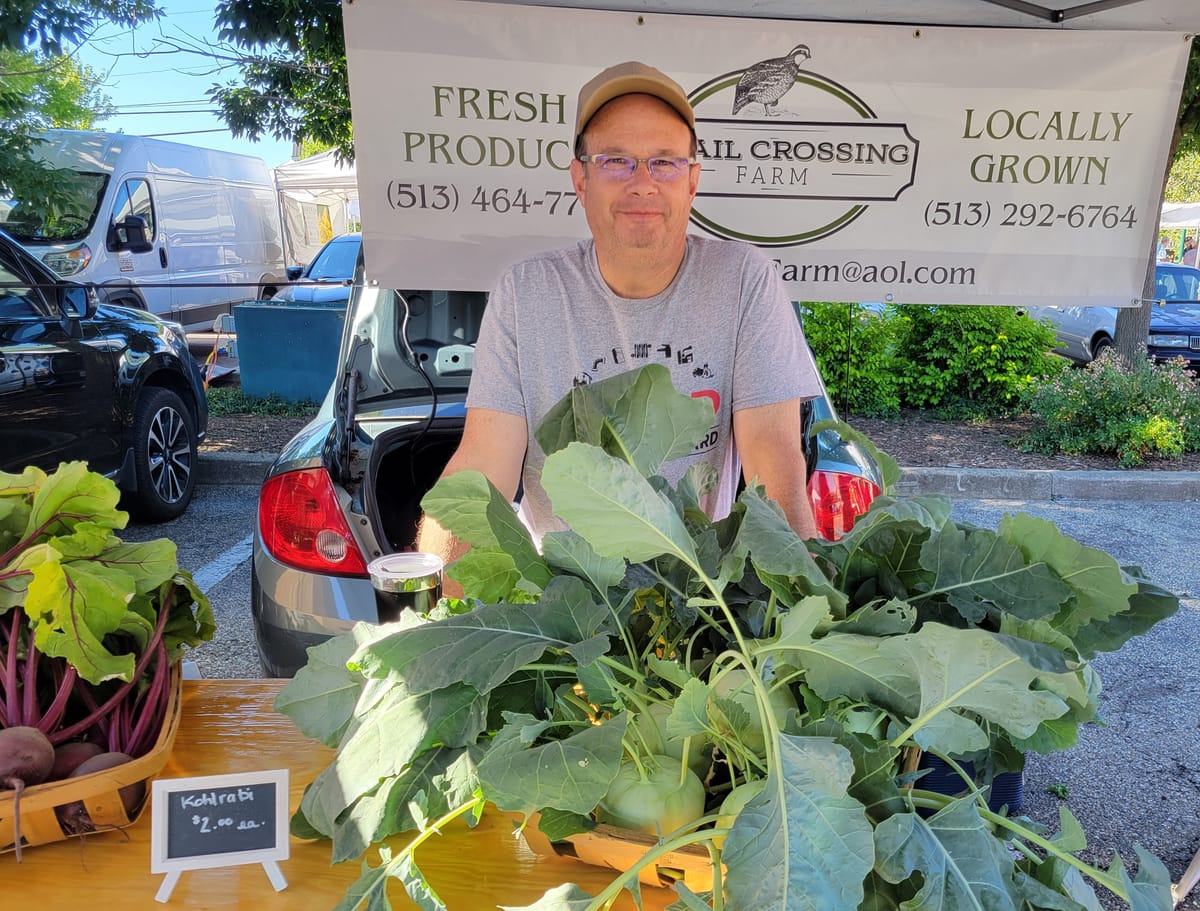How to cook with kohlrabi, the space capsule of vegetables
Kohlrabi, a vegetable cousin of cauliflower and kale, is available at the Oxford Farmers Market. The vegetable's variety of uses make up for its unfortunate name, James Rubenstein writes.

Kohlrabi is now available from local growers at Oxford’s Farmers Market. I suspect this news will not invoke the same enthusiastic feedback as my recent sighting of more well-known local raspberries.
“Kohl” is German for cabbage and “rabi” is a Swiss German variant for “turnip.” German is a wonderful language, but finding an attractive name for a vegetable isn’t one of its assets.
Kohlrabi’s appearance is as problematic as its name. The New York Times describes it as a cross between an octopus and a space capsule. When I first spotted kohlrabi in the Farmers Market a few years ago, I immediately exclaimed “Sputnik.” Internet photos reinforce kohlrabi’s close physical resemblance with Sputnik, the first artificial satellite launched into Earth’s orbit by the Soviet Union in 1957. Kohlrabi’s orb-like shape and especially its bumps and long thin stems resemble Sputnik’s external radio antennas.
The University of Vermont calls kohlrabi “vegetable of mystery.” Its origin is unknown, and the first record of it did not occur until 1554, by an Italian botanist Pietro Mattioli.
A kohlrabi looks like a root crop, but the kohlrabi bulb is actually part of the stem not the root. Like other members of the brassica oleracea family (broccoli, Brussels sprouts, cabbage, cauliflower, collards and kale), kohlrabi is a nutritional superstar.
To deconstruct a kohlrabi for eating, the outer shell needs to be cut away with a knife, as it is too thick for a peeler. Best bet is to cut off the Sputnik antennas and chop the orb into a few wedges before peeling.
The resulting white flesh has many uses. Kohlrabi can be eaten raw or cooked. Raw kohlrabi has an agreeable crunchy texture and a sweet taste. I recommend cutting kohlrabi into sticks like carrots and serve with a dip, such as hummus.
You could also use raw kohlrabi like cabbage in slaw. Slice the peeled kohlrabi into very thin half-moons, then into very thin matchsticks, as thin as can be managed with a knife. If you prefer slaw more finely ground, grate or pulse chunks of kohlrabi.
After finely slicing or grating the kohlrabi, grate a carrot and perhaps some purple cabbage or kale for color. Mix with 3 parts mayonnaise and 1 part Dijon mustard, and sprinkle in some garlic, dill, Mediterranean herbs and paprika.
If you are willing to do a bit of frying, kohlrabi makes a pleasing alternative to potatoes. For fritters, peel and grate the kohlrabi as suggested for the slaw, mix with one egg, 2 tablespoons breadcrumbs or matzoh meal, pepper, garlic powder and dill.
In a large skillet, heat oil with a high smoke point, such as grapeseed or avocado oil. Drop a spoonful of the mix into the hot oil and repeat until all is used. Brown on both sides. Don’t crowd the pan; make multiple batches if necessary.
I’m not sure how English got saddled with the name kohlrabi. The French call it chou-rave, which I prefer, because if you actually try kohlrabi, you too will rave.
Poor kohlrabi, saddled with an unfortunate name and appearance, is ignored or ridiculed compared with its more fashionable brassica cousins like cauliflower and kale. We can’t change kohlrabi’s appearance, but with a new name it might become just as fashionable as its close cousin kale.
James Rubenstein is president of the Board of Directors for the Oxford Free Press and professor emeritus of geography at Miami University.




